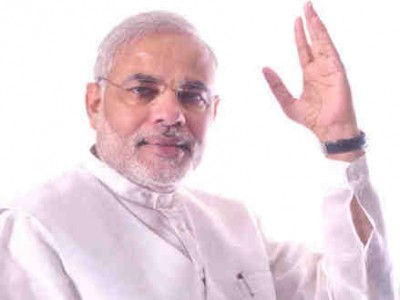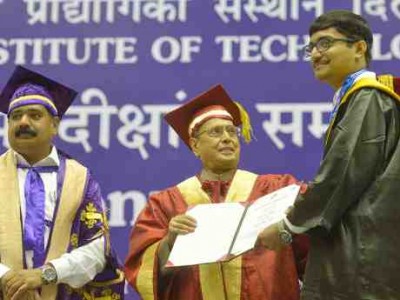
How India Abuses Children’s Right to Education
The government apathy toward education has begun to trample the rights of children who are supposed to be the pillars of development in India.
By Rakesh Raman
Five years ago – in April 2010 to be precise – the Indian government began implementing the Right to Education (RTE) Act for children in the country.
It is a fundamental right guaranteed by Article 21A of the Indian Constitution and it aims to provide free education to economically weaker sections of society.
Many thought it was the right move to put an end to the persisting illiteracy that has been the bane in the country’s development.
Five years have already elapsed, but the state of education continues to be bad for students. Right to education that was supposed to provide some meaningful education to children primarily in the age group of 6 to 14 years has been reduced to a mere right to school.
In other words, there is an overabundance of schools but no education. Almost all government-run schools in the country lack basic educational resources.
Almost all government-run schools in the country lack basic educational resources.
Currently, there are about 15 lakh schools in India while 80% of these are government schools. The teaching standards are equally bad in government as well as private schools.
In these schools, students are admitted and treated like herds of stray cattle. It is not only the primary education, but the secondary and tertiary education systems are equally disastrous.
It is reflected in the worsening Human Development Index (HDI) of India. Published by the United Nations Development Programme (UNDP), HDI – inter alia – indicates the level of educational skills in a country and lets you know if people in that country are able to achieve their goals.
Unfortunately, India falls at No. 135 in the global list of countries ranked on the basis of their HDI.
Incompetence of school teachers is believed to be a major irritant in the dwindling education system of India.
That means, despite all the loud claims by the Indian government about the education standards in the country, the education in India is not producing skilled workforce. The so-called educated people in India are not employable in any modern field. Worse, most of them are not even trainable.
Disturbing Facts and Figures
Factors such as unskilled teachers, obsolete curricula, disturbing teacher-student ratios, and perfunctory pedagogical methods have resulted in the total demise of the education structure in the country.
And this government apathy toward education has begun to trample the rights of children who are supposed to be the pillars of development in India.
A new ‘Pearson Voice of Teacher Survey 2015′ reveals that Indian students may be educated but they are not employment-ready.
In the survey, 52% of the respondents believe that India’s Education Assessment Framework lacks specific action points for teachers and parents to enable holistic education.
A new survey reveals that Indian students may be educated but they are not employment-ready.
Dissatisfaction with the assessment system in India is much higher at Higher Education level (60%) than School level (43%).
Reports suggest that students’ learning outcomes continue to dip while lesser Class 5 children are able to read school texts prescribed for Class 2 children. Students even in Class 10 and beyond cannot solve simple arithmetic problems involving addition, subtraction, etc. The English language skills of students as well as teachers are pathetic.
Incompetent Teachers
Incompetence of school teachers is believed to be a major irritant in the dwindling education system of India. It is reported that a huge education budget is used for teachers’ salaries while hardly any money is spent on their training. So, teachers are not fully trained to teach the students.
Data reveals that the trends in student retention and quality are not very encouraging.
Recently, the Government Budget saw 23% cut in funds for the Sarva Shiksha Abhiyan, which is supposed to finance the RTE implementation. The budgeted amount for 2015-16 is reduced to Rs. 22,000 crore from Rs. 26,608 crore in 2013-14.
Thus, most teachers do not possess even the basic teaching skills. The Central Teacher Eligibility Test 2015 results for the Central Board of Secondary Education reveal that only 13.53% of the candidates could clear the test.
Poor Infrastructure
The state of infrastructure in schools is also deplorable. According to 2012-2013 data of Planning Commission, only 40% of primary schools in the country have an electricity connection.
Moreover, 7.32% government schools in India don’t receive text books from the government, 6% of primary schools don’t have drinking water facility, and 25% schools don’t have toilets for girls.
Even when schools have computers, the computer labs remain closed because teachers are not competent enough to impart computer education.
Only 22% and 57% of the schools have computer learning facilities and playgrounds respectively. Even when schools have computers, the computer labs remain closed because teachers are not competent enough to impart computer education.
Only 55% schools have usable toilets for girls. This has an adverse impact on the enrollment and retention of girl students.
Further, the data reveals that the trends in student retention and quality are not very encouraging. Dropout level in both rural and urban areas is higher at the upper primary (Classes 6-8) than primary level (Classes 1-5). In other words, older children tend to leave the school without completing their education.
As most parents are poor and uneducated, they push their children into low-wage employment in their early age. That is a major reason for increasing dropouts from schools.
Perfunctory School Management Committees
The Right to Education Act also requires school management committees (SMC) to be set up to improve the quality of education in government schools.
In every 16-member SMC, for example, 12 members should be the parents of the students while the others can be the school principal, local authorities, teachers, and social workers in the field of education.
School management committees are toothless and they do not work in a transparent manner.
It is, however, observed that school principals and teachers prefer to handpick only weak and uneducated parents who cannot raise their voice against the school management. As SMCs are toothless and they do not work in a transparent manner, they fail to contribute toward improving the education in schools.
Tutelage Threat
Now, a serious menace has erupted in the Indian education sector. As schools are not able to deliver proper education to students, ignorant parents fall prey to the designs of private tutors – most of whom are themselves clueless about the subjects they teach.
Plus, private tuitions put an unbearable burden on the students mental development. Students who attend private tuitions after school hours slowly start losing their thinking ability and become dumb for the rest of their lives.
School syllabi are also obsolete and irrelevant for the always-evolving job market.
As private tutors, in fact, fleece the students and their parents, there is no proactive attempt by the Indian government to stop this growing menace, although as a rule the government prohibits private tuitions.
Obsolete Syllabus
School syllabi are also obsolete and irrelevant for the always-evolving job market. That is why even after holding degrees and diplomas, students don’t get jobs and unemployment rate in India is increasing at an alarming rate.
A recent case, for example, highlights the dearth of jobs for the educated people. For the Uttar Pradesh (U.P.) government secretariat jobs, graduates, postgraduates and even Ph.D. holders were among the 23 lakh applicants who applied for just 368 posts of peons. Such shocking cases are quite common in all parts of India.
Dirty Politics
Politics plays a major role in violating the right to education of students. No government in India during the past seven decades since the country’s independence has shown any inclination to educate its people.
Indian politics and politicians (most of them are uneducated) have been thriving on voters’ illiteracy, as mostly the uneducated voters vote and they can easily be bribed during elections.
Indian politics and politicians have been thriving on voters’ illiteracy, as mostly the uneducated voters vote and they can easily be bribed during elections.
It is not in the interest of any government in India to carry out education reforms because politicians and bureaucrats are corrupt and they do not want to face the educated people.
They know that educated people protest and pose difficult questions to the administration while dishonest politicians and bureaucrats want to run the country in a totally freewheeling manner. That is why India continues to be a poor, underdeveloped country.
In order to suppress parents’ possible dissent against the poor quality of education, government bribes them with baits such as monthly allowance ranging between Rs. 200 and Rs. 500 per school student per month and midday meals.
And it is shocking to note that the monthly amount of money is decided and distributed to students based on discriminatory parameters such as gender, caste, religion, etc.
Most parents are greedy and send their children to schools only to collect the government dole; they are not interested in educating their children.
This may be the reason that parents in low-income localities produce many children instead of following the family planning norms and restricting the production to two children per family. Large families and unrestrained population growth in India are among the many worrying factors that impede economic development in the country.
With more school-going children, parents try to collect more monetary benefits from the government’s corrupt education schemes that tend to carelessly squander taxpayers’ money.
Parents who are not raising their voice against the deteriorating education standards in the country are the worst enemies of their own children.
While education remains a distant dream, government is leveraging the high enrollment in schools as a deceitful political tool to hoodwink the voters and win elections.
The poor state of education in India manifests this harsh reality. Despite tall claims by the government, not more than 10% of 1.25 billion people in India are actually educated.
Now, the Indian government supported by the morally corrupt parents is hell-bent to destroy the current as well as future generations by depriving children of their right to education.
Parents who are not raising their voice against the deteriorating education standards in the country are the worst enemies of their own children.
In such a dreaded situation, only God – if He exists – can save the children of India. Will He?
By Rakesh Raman, who is the managing editor of RMN Company and runs free schools for poor children under his NGO – RMN Foundation.




